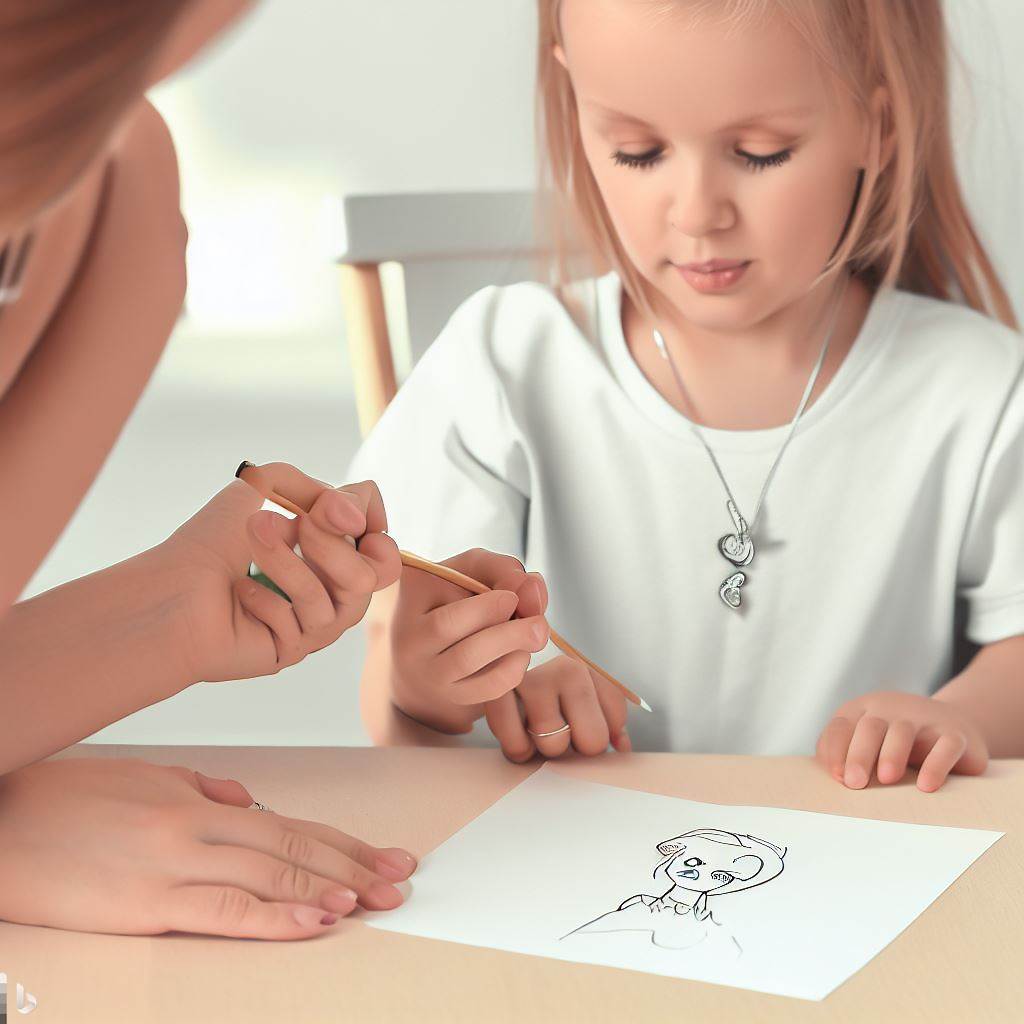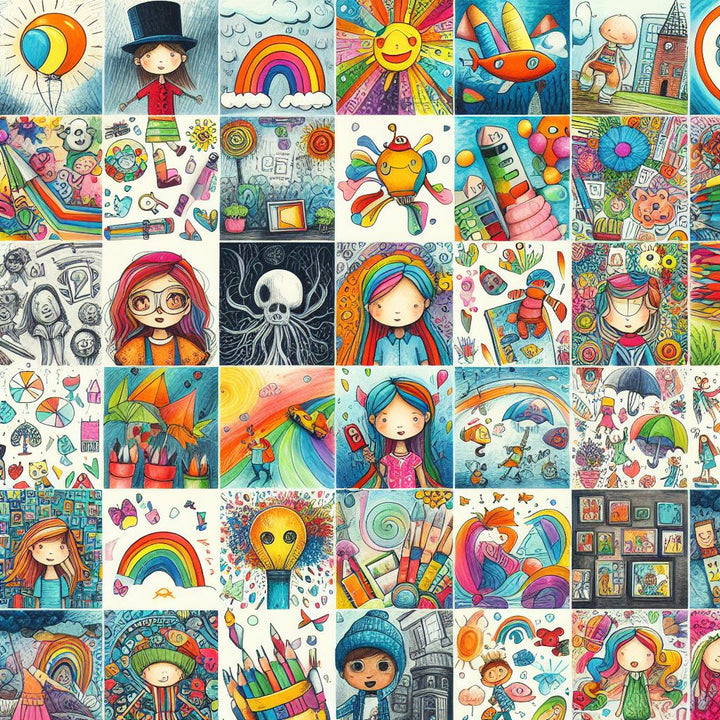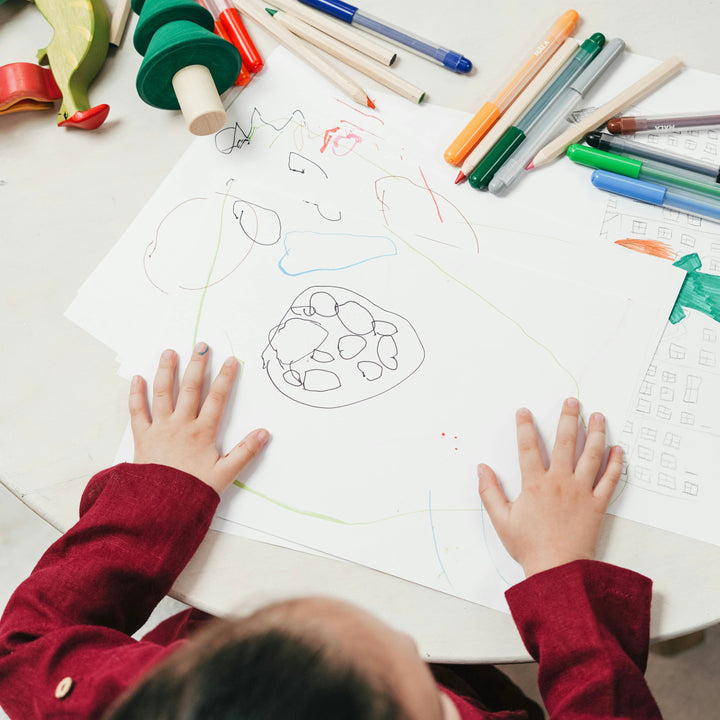Understanding Children's Drawings:
Before we explore the relationship between children's drawings and their intelligence, it's essential to understand the developmental stages of drawing. According to renowned developmental psychologist Dr. Viktor Lowenfeld, children progress through several stages of artistic development, each characterized by distinct characteristics and abilities:1. Scribbling Stage (2-4 years old): During this stage, children make random marks and scribbles on paper, exploring the use of different materials and movements.
2. Pre-Schematic Stage (4-7 years old): In this stage, children begin to create more recognizable shapes and symbols, such as circles, lines, and basic representations of objects.
3. Schematic Stage (7-9 years old): At this stage, children start to incorporate more detail and complexity into their drawings, using symbols and shapes to represent specific objects and ideas.
4. Realistic Stage (9-12 years old): In the final stage, children demonstrate greater realism and accuracy in their drawings, depicting objects and scenes with more precision and attention to detail.
Now that we have a basic understanding of the developmental stages of drawing let's explore how children's drawings can provide insights into their intelligence and cognitive abilities:
Spatial Intelligence
Children's drawings offer valuable clues about their spatial intelligence, which refers to their ability to perceive, understand, and manipulate spatial relationships. For example, children who demonstrate advanced spatial intelligence may depict objects in proportion to one another, use overlapping to convey depth, and show an understanding of perspective in their drawings. Their drawings may also exhibit a sense of symmetry, balance, and spatial organization.Fine Motor Skills
Drawing requires precise hand-eye coordination and fine motor skills, both of which are essential for cognitive development. Children who excel in fine motor skills may produce drawings with clear, controlled lines, intricate details, and consistent patterns. Their ability to manipulate drawing tools, such as pencils, crayons, and brushes, reflects their level of manual dexterity and coordination.Symbolic Representation:
As children progress through the stages of artistic development, they gradually develop the ability to use symbols and abstract representations to convey meaning in their drawings. For example, a simple circle may represent the sun, while a series of lines may represent a person. Children who demonstrate advanced symbolic representation skills can convey complex ideas and concepts through their drawings, reflecting their cognitive flexibility and imaginative thinking.Emotional Expression:
Drawing serves as a powerful outlet for emotional expression, allowing children to communicate their thoughts, feelings, and experiences in a nonverbal manner. Children's drawings often reflect their inner world, depicting themes such as family relationships, friendship, fears, and aspirations. The choice of colors, symbols, and subject matter in their drawings can provide valuable insights into their emotional well-being and psychological development.Cognitive Development:
Children's drawings offer a window into their cognitive development, including their ability to problem-solve, think critically, and engage in creative thinking. For example, children who demonstrate advanced cognitive skills may incorporate storytelling elements into their drawings, create imaginative scenarios, and experiment with perspective and visual composition. Their drawings may also reflect their growing knowledge of the world around them, as they explore concepts such as cause and effect, spatial relationships, and symbolic representation.Case Studies
To illustrate the relationship between children's drawings and their intelligence, let's consider two hypothetical case studies:Case Study 1: Sarah, Age 5
Sarah is a 5-year-old girl who loves to draw. During the pre-schematic stage of artistic development, Sarah's drawings consist of basic shapes and symbols, such as circles, squares, and stick figures. She enjoys using bright colors and experimenting with different drawing materials. Sarah's drawings often depict simple scenes from her daily life, such as her family, pets, and favorite toys. While her drawings may lack precision and detail, they demonstrate her burgeoning imagination and creativity.Despite her young age, Sarah's drawings reveal several key insights into her intelligence and cognitive abilities:
- Spatial Intelligence: Sarah's drawings show an understanding of spatial relationships, as she places objects in relation to one another within the picture plane. While her drawings may lack realism, they convey a sense of depth and perspective.
- Fine Motor Skills: Sarah's use of drawing tools demonstrates her developing fine motor skills and hand-eye coordination. While her lines may be shaky and uneven, she shows a willingness to experiment with different mark-making techniques.
- Symbolic Representation: Sarah's drawings use simple symbols and shapes to represent objects and ideas. While her drawings may appear abstract to adults, they convey meaning to her and reflect her growing ability to communicate visually.
- Emotional Expression: Sarah's drawings serve as a means of emotional expression, allowing her to process her thoughts and feelings through art. Her choice of subject matter and colors may reflect her emotional state and experiences.
Case Study 2: Jack, Age 10
Jack is a 10-year-old boy who is passionate about drawing. He is in the realistic stage of artistic development, where his drawings demonstrate a high level of detail, accuracy, and realism. Jack enjoys drawing from observation, particularly animals and nature scenes. He pays close attention to proportion, perspective, and shading in his drawings, striving for accuracy and precision.Jack's drawings offer valuable insights into his intelligence and cognitive abilities:
- Spatial Intelligence: Jack's drawings exhibit a keen understanding of spatial relationships, as he accurately depicts the proportions and perspectives of objects within the picture plane. His use of shading and perspective adds depth and dimension to his drawings, creating a sense of realism.
- Fine Motor Skills: Jack's precise lines, intricate details, and controlled mark-making reflect his advanced fine motor skills and manual dexterity. He demonstrates mastery over drawing tools and techniques, allowing him to achieve the desired effects in his drawings.
- Symbolic Representation: While Jack's drawings focus on realistic representation, he also incorporates symbolic elements to convey meaning and narrative. His ability to infuse emotion and storytelling into his drawings reflects his cognitive flexibility and imaginative thinking.
- Cognitive Development: Jack's drawings showcase his advanced cognitive skills, including problem-solving, critical thinking, and creative thinking. He approaches drawing as a form of visual problem-solving, using observation, analysis, and experimentation to achieve his desired outcomes. His drawings also reflect his growing knowledge of the natural world and his ability to express complex ideas visually.

![What Children's Drawings Say of Their Intelligence [CASE STUDIES]](http://foreverdrawn.com/cdn/shop/articles/46054c93-37cb-4763-b5d1-b750b61ab612.jpg?v=1707238521&width=1920)




